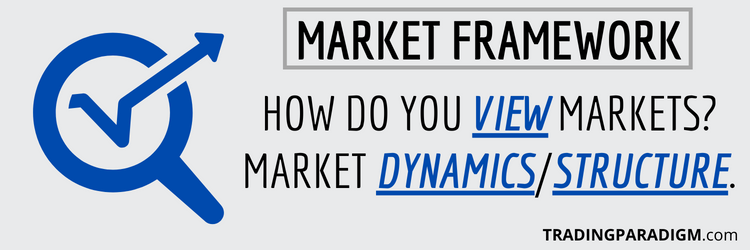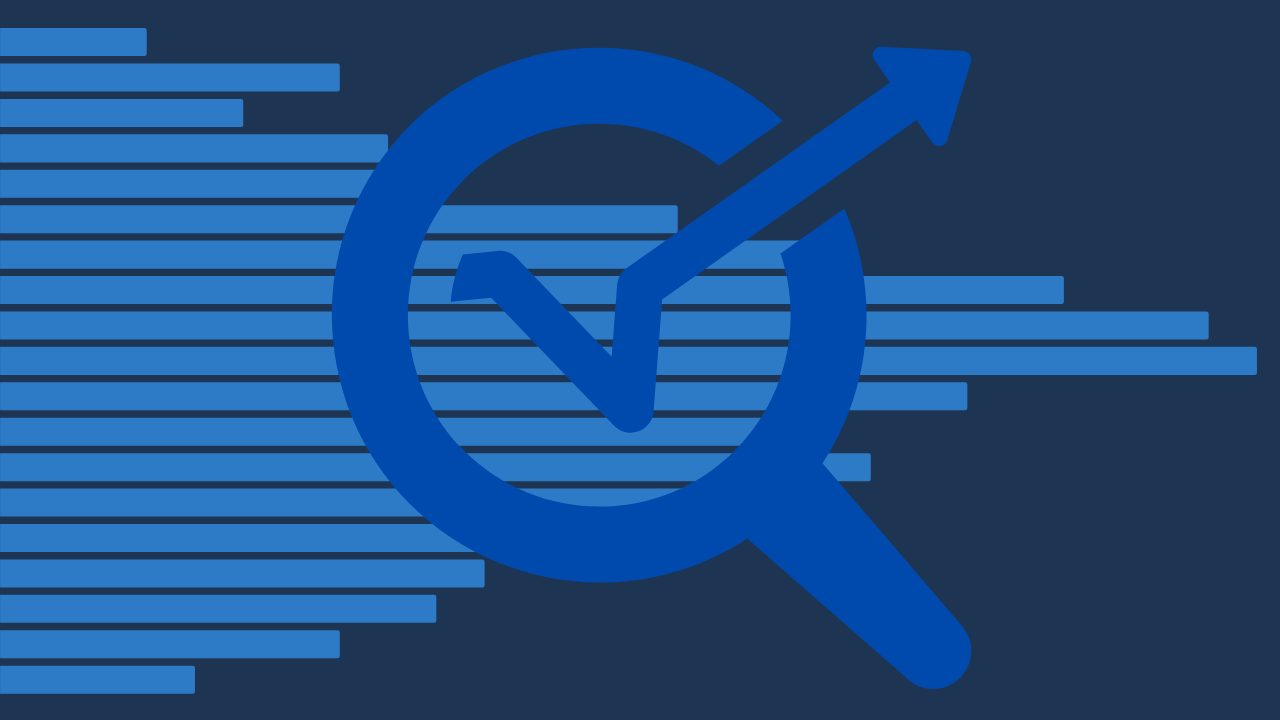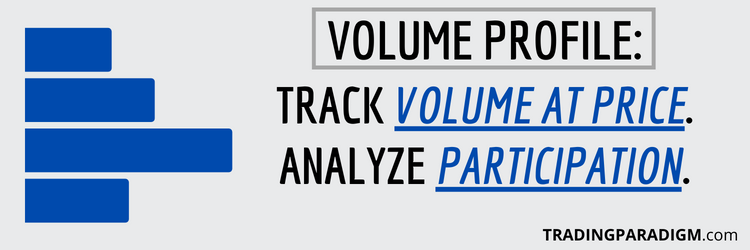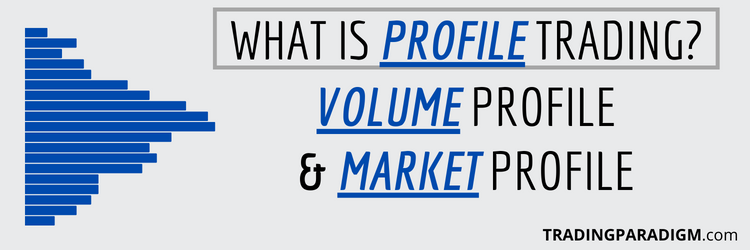Develop a Strong Trading Methodology Based on Market Dynamics and Structure:
Throughout this site, I often talk about expected value, asymmetric risk-reward, the law of large numbers, accurately tracking trades, and acting like the casino – and these are all core concepts to understand and apply when it comes to your market framework.

But these concepts – while vital – don’t explain market dynamics and structure. In other words, what moves markets? Why does price move from one area to the next? How do you pinpoint optimal opportunities? Where does your edge actually come from?
Having a robust methodology for viewing and analyzing markets is what I think a lot of new/inconsistent traders struggle with. They just don’t have a clear, powerful process for organizing/interpreting market-generated information and making good decisions.
The typical market participant gets lost in the chaos of price movement – never really understanding what’s going on “under the hood” so to speak. They possess a surface-level market perspective that’s largely ineffective – with limited to no regard to context.
This is because most are looking for easy answers to trading success – a simple price pattern or indicator that “works”. But everything works sometimes by mere chance. This doesn’t typically equate, however, to a process with positive expected value.
So you have to dig deeper into contextual analysis to develop a more potent framework. A one-dimensional view is inadequate.
Take Your Approach From 1D to 3D With Auction Market Theory and Profiling Tools:
Trading based on auction market theory (and utilizing the profiling tools often associated with it – volume profile and market profile) isn’t the only way to view markets. But I want to share them because they’re the framework/tools that make the most sense to me.
Auction market theory is the overall philosophy that financial markets are auctions. Price movement isn’t just some random, chaotic phenomenon. What the market is trying to do is discover prices where buyers and sellers are willing to do business.
Price is merely an advertising mechanism. It advertises higher until there are no more buyers at those levels and advertises lower until there are no more sellers at those levels. The main purpose of the market is to facilitate trade between buyers and sellers.
The prices where buyers and sellers spend the most time and trade the most shares/contracts are areas where buyers and sellers are agreeing on value. These areas of past, current, and developing value are key reference zones for price movement.
1. PRICE → Advertises Opportunity
2. TIME → Regulates Opportunity
3. VOLUME → Shows Participation
This is where the volume profile and market profile tools come into play. They allow you to record and interpret the 3 elements of value (price, time, and volume) in unique ways that are far more robust than the typical line, bar, or candlestick chart.
This framework (auction market theory) and supporting tools (volume profile and market profile) have allowed me to more precisely observe and analyze the flow of market activity. They’ve removed much of the confusion/mysticism behind how markets work.
Cultivate the Market Understanding Required to Be a Consistently Profitable Trader:
Successful traders have a level of personal and market understanding that the masses simply don’t have – and this in-depth emotional and behavioral understanding of self and markets is the foundation for developing strategies/systems with edge.
To be clear, auction market theory by itself is not a trading strategy – it’s a framework for viewing market activity. And neither is volume profile and market profile – they’re merely tools for effectively organizing critical market-generated information.
But what this framework (and supporting tools) does is provide structure around how markets move and reveal important patterns that aren’t visible to the average trader. When I personally came across it, it was like a haze was removed from my market vision.
From there, you can develop individual setups, strategies, and systems based on the specific markets, instruments and time frames you trade – as well as your own personal schedule, account size, risk tolerance, cognitive strengths, and overall preferences.
There is no one-size fits all approach because everybody is different and markets are complex. But when you learn to view markets from a behavioral perspective (price vs. value), it allows you to become a creative problem solver and build your own risk process.
You might be shocked by the consistency of market behavior when viewed through the lens of auction theory and profiling tools.
Learn More in the Trading Success Framework Course
Written by Matt Thomas (@MattThomasTP)
Related Pages:
- What is Volume Profile – Trading With Volume Profile
- What is Market Profile – Trading With Market Profile
- How to Properly Track Your Trades to Figure Out What Works
- What is Auction Market Theory – Trading Value vs. Price
- What is Trade With Profile – Best Trader Training Program?





As a beginner in trading you have given me an insight to choosing which way to go and what to trade in, as in going in deeper and not just looking at the price but also taking into consideration the time and volume. I hope I have understood this correctly if not please correct me. Thanks for the information.
Hi Ruth – I’m not trying to force anyone into adopting a specific market view/methodology, but I think it’s important to find/generate one that makes the most sense to you. In my personal experience, however, auction market theory (and the volume profile and market profile tools often used to support it) are what make the most sense to me (by far) – and I wanted to share that for others who may be struggling to find clarity and real edge in their approach.
It’s not the only way to view markets, but it’s removed so much confusion in regard to how markets truly work/behave in my mind. The main idea behind auction market theory is that markets shift around from areas of balance (where buyers and sellers agree on price – and thus, spend a lot of time and do a lot of volume) and imbalance (where buyers are more aggressive than sellers or vice versa). As a trader, the opportunities lie in the divergences between price and value – these 2 things aren’t always aligned. Value is a 3-pronged concept including price, time, and volume – and price is merely price (an advertising mechanism). Volume profile and market profile are tools that allow you to view and interpret these balance vs. imbalance and value vs. price relationships in robust, visually-appealing ways.
If you have any additional thoughts/questions – never hesitate to ask!
Matt … I followed Kyle for several years until his association with The Bull. I assume that relationship has past and was hoping Kyle was back on track mentoring again. Would you help? Joe Rumsey
Hi Joe – I removed some of the personal details left in your comment (location, phone number, email, etc.) just for privacy purposes. But I appreciate you reaching out.
Are you talking about Kyle Dennis and RagingBull? I’m honestly not sure what the relationship is between the two at this point. Maybe Kyle is still working in the background at RagingBull or maybe they’ve completely cut ties – I’m not sure. But I haven’t seen or heard anything about Kyle getting back to mentoring. With that being said, I haven’t really followed Kyle or RagingBull all that closely for several years now. Somewhere around the 2018 timeframe I felt like the marketing/advertising from RagingBull in general was getting to be a little ridiculous – and it seemed like every month or two there was some sort of new service or spin-off of another service being launched. The excessive focus on sales kind of pushed me away from using/following their services. So I’m sorry to not be much help with an update here, but I can’t really speak to what’s going on at RagingBull with limited to no recent experiences with it.
Let me know if there’s any other way I can help.